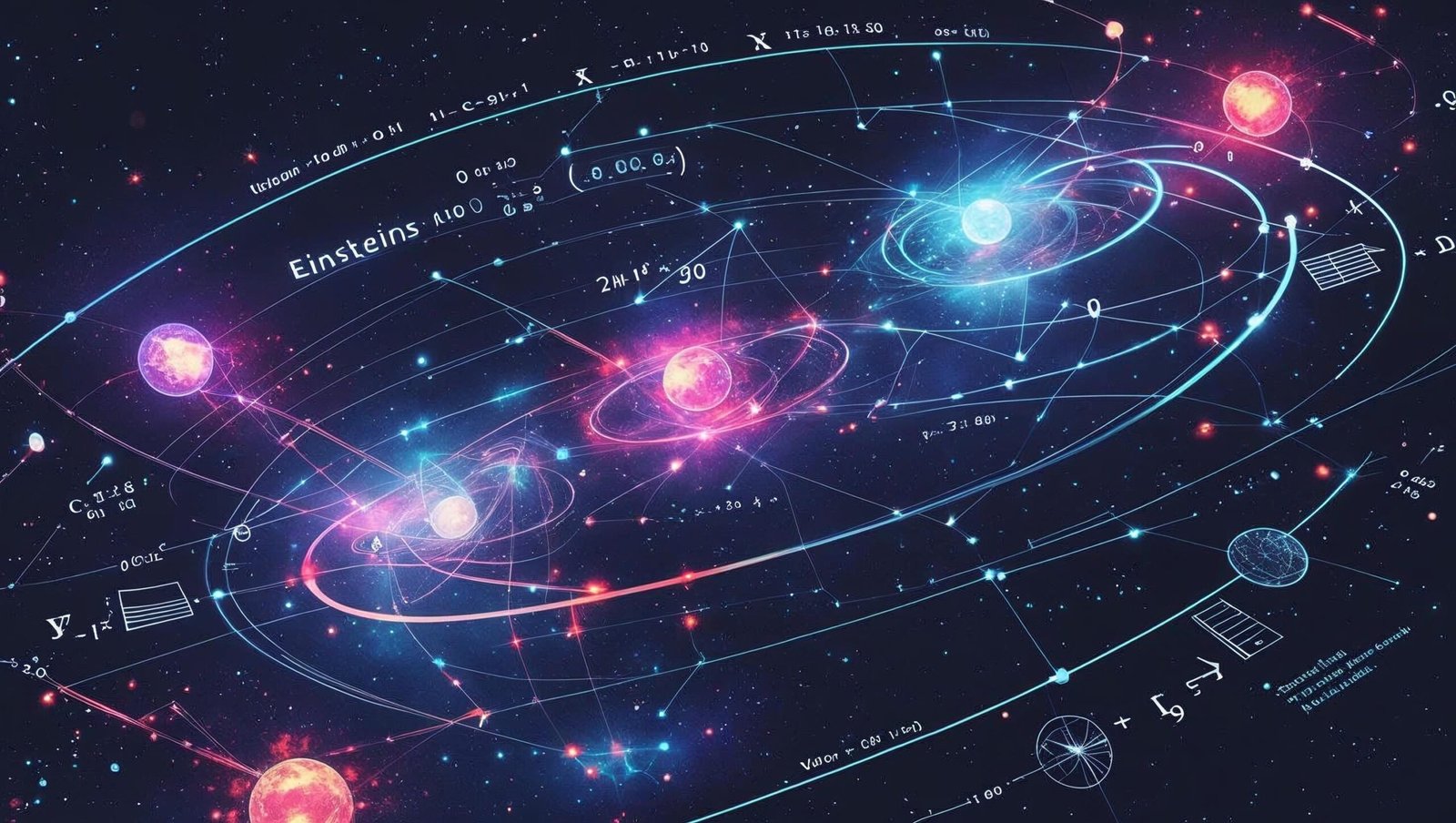Unveiling the Cosmos: A Profound Review of The Theory of Everything by Stephen Hawking
Introduction
In The Theory of Everything, world-renowned physicist Stephen Hawking presents a masterful overview of the most profound discoveries in physics. Adapted from a series of lectures delivered at Cambridge University, this book simplifies complex ideas for a lay audience. With clarity, wit, and brevity, Hawking guides readers through the wonders of the cosmos, addressing the fundamental laws that govern space, time, black holes, and the nature of reality. This detailed The Theory of Everything Book Review dissects each lecture to offer insight, context, and critical reflection.

Chapter-wise Analysis
Chapter 1: Our Picture of the Universe
Hawking begins with a historical overview of cosmology, from Aristotle to Newton. He sets the tone for his objective—to unify general relativity and quantum mechanics into one grand theory.
Chapter 2: Space and Time
This section introduces Einstein’s revolutionary ideas of curved space and time. Hawking’s accessible explanations draw parallels between intuitive experience and scientific theory.
Chapter 3: The Expanding Universe
Hawking breaks down the discovery of the redshift, Big Bang theory, and cosmic background radiation—pillars of modern cosmology.
Chapter 4: Black Holes
One of Hawking’s favorite topics, black holes, are explored in depth. He demystifies event horizons, singularities, and entropy.
Chapter 5: Black Holes Ain’t So Black
He introduces Hawking Radiation, positing that black holes emit particles and can eventually evaporate. A key contribution to theoretical physics.
Chapter 6: The Origin and Fate of the Universe
Here, Hawking raises fundamental questions: Did the universe have a beginning? Will it have an end? He reviews models of inflation and cyclical universes.
Chapter 7: The Arrow of Time
Time flows in one direction, but why? Hawking aligns thermodynamic, cosmological, and psychological arrows of time.
Chapter 8: The Unification of Physics
In the climax, Hawking discusses string theory, M-theory, and the search for a single unifying principle—a theory of everything.

Visualizing event horizons and Hawking Radiation
Further Explorations Inspired by The Theory of Everything
Hawking’s Influence on Future Generations
The impact of The Theory of Everything is not limited to theoretical physics; it extends into education, literature, and even philosophy. Many students cite the book as their introduction to cosmology. It has inspired a new generation of thinkers to question, imagine, and explore the unknown. In this way, the book is more than a scientific narrative; it is a catalyst for intellectual awakening.
Hawking’s accessible language and daring imagination offer a blueprint for how complex science can be communicated to the masses. The Theory of Everything has become a model for how to demystify science without losing its sophistication.
Ethics and Responsibility in Scientific Discovery
While The Theory of Everything is centered on scientific exploration, its implications also stir questions of ethics. If we come to understand the universe at its most fundamental level, what responsibilities follow? Hawking doesn’t dwell on moral philosophy, but the framework he presents demands consideration of how humans should wield such profound knowledge.
Should technological power derived from advanced theories be unrestricted? Do we risk hubris in our quest for omniscience? The Theory of Everything indirectly nudges the reader to confront these ethical dimensions.
The Cosmological Constant and the Mystery of Dark Energy
Another significant area Hawking explores tangentially is the cosmological constant. This leads us into the modern mystery of dark energy. Though not thoroughly explained in The Theory of Everything, the concept provides a bridge between the known and the unknown in contemporary cosmology.
Current observations suggest the universe’s expansion is accelerating, and dark energy is the driving force behind it. The Theory of Everything, by contextualizing this problem within the larger framework of unification, highlights the deep gaps still present in our understanding.
Philosophy and Metaphysics in The Theory of Everything
Hawking occasionally ventures into metaphysical territory. Questions like “Why is there something rather than nothing?” and “Did the universe need a creator?” echo ancient philosophical concerns. Although he offers scientific conjecture, he also respects the limits of empirical explanation.
The Theory of Everything thereby blurs the boundary between physics and philosophy. This interplay invites readers to think beyond measurements and equations and to consider the profound existential implications of cosmological research.
The Theory of Everything in the Age of AI and Space Exploration
In a world increasingly shaped by artificial intelligence and space travel, The Theory of Everything feels ever more relevant. As private companies launch missions beyond Earth and AI accelerates data analysis, the foundational understanding presented in Hawking’s book becomes crucial.
Will AI one day contribute to finding the elusive theory of everything? Can our understanding of space and time help us design more intelligent machines or navigate interstellar distances? These questions, while speculative, stem directly from the curiosity that The Theory of Everything cultivates.

Teaching Science Through Stories
One of Hawking’s greatest achievements in The Theory of Everything is storytelling. He converts abstract ideas into relatable stories, such as the twins paradox or the collapsing star that becomes a black hole. This pedagogical approach has influenced how science is taught in schools and universities.
The Theory of Everything isn’t just a book for enthusiasts; it’s a teaching tool. It shows that clarity, metaphor, and narrative are as important in science as in literature.
The Final Word: A Universe Within Reach
Ultimately, The Theory of Everything serves as both a mirror and a map. It reflects our deepest desires to understand who we are and where we come from, and it provides a tentative roadmap for future discovery.
Though we have not yet reached the final unifying theory, Hawking’s work assures us that the journey is worth pursuing. Every black hole, every quark, and every quantum fluctuation tells a part of the universal story. The Theory of Everything invites everyone to read that story—and perhaps even write the next chapter.
The Theory of Everything and the Search for Unity
One of the most compelling aspects of The Theory of Everything is its persistent pursuit of unity. Throughout the lectures, Stephen Hawking insists that the ultimate aim of modern physics is to develop a coherent and comprehensive framework that unifies all the forces of nature. This ambition is mirrored in Einstein’s later works and continues to dominate theoretical physics today.
Hawking’s passion for explaining the interrelationship between general relativity and quantum mechanics forms the heart of The Theory of Everything. These two pillars of physics govern the very large and the very small, yet they remain fundamentally incompatible. Hawking’s articulation of this dilemma not only underscores the complexity of the challenge but also inspires a deep sense of wonder.
Time Travel and Wormholes: Possibilities Within the Theory of Everything
While not a central theme, The Theory of Everything occasionally flirts with the fantastic, such as the idea of time travel through wormholes. Hawking skeptically but playfully considers whether time travel is possible under the laws of physics. Using quantum mechanics and general relativity as a foundation, he explains how closed time-like curves and traversable wormholes might theoretically allow movement through time.
This section of The Theory of Everything appeals to the imagination while remaining rooted in scientific discussion. By touching on concepts once relegated to science fiction, Hawking reinforces the idea that our universe is more mysterious and exciting than we might assume.
Quantum Gravity and the Legacy of Hawking’s Vision
One of the enduring legacies of The Theory of Everything is how it shaped the public discourse around quantum gravity. Hawking’s work laid the groundwork for further developments in string theory and loop quantum gravity. He does not present final answers in the book, but rather asks the right questions.
The attempt to reconcile the unpredictability of quantum mechanics with the geometric precision of general relativity is perhaps the most challenging task in physics. The Theory of Everything makes this debate accessible without dumbing it down, giving readers a glimpse of the intellectual battle waged at the edge of human knowledge.

Hawking’s Intellectual Courage
A notable strength of The Theory of Everything lies in Hawking’s intellectual humility. He openly acknowledges the limits of current knowledge and the speculative nature of some theories. This honest tone fosters trust with the reader. It also provides a more authentic picture of how science progresses—not through certainties but through bold hypotheses and rigorous testing.
His predictions and openness to being proven wrong are a testament to the scientific spirit. Hawking often revisited and revised his own theories. His concession that information may not be lost in black holes, which reversed his earlier stance, illustrates the evolving nature of scientific inquiry.
Public Reception and Enduring Appeal
Since its release, The Theory of Everything has become a staple for science enthusiasts. It consistently ranks among the most influential popular science books. Its enduring appeal lies in its perfect balance between conceptual richness and readability. The book empowers readers to engage with complex theories without being overwhelmed.
The popularity of The Theory of Everything also inspired the award-winning biographical film of the same name, which introduced Stephen Hawking’s ideas to an even broader audience. Through this cultural resonance, the book continues to ignite scientific curiosity.
The Role of Mathematics in Understanding the Universe
Though The Theory of Everything avoids dense equations, it stresses the foundational role of mathematics. Hawking often describes the universe as written in the language of math. While the book aims for simplicity, it respects the mathematical elegance underlying physical theories.
Readers gain an appreciation of how mathematical models serve not just to describe but to predict the behavior of reality. This mathematical foundation underpins cosmological models, black hole dynamics, and quantum field theories. Hawking invites readers to think of mathematics as a gateway to understanding existence itself.
Why The Theory of Everything Still Matters Today
As we continue to explore the frontiers of physics—from the search for dark matter to probing black holes with the Event Horizon Telescope—the questions posed in The Theory of Everything remain unresolved. Hawking’s voice still resonates as a guide through the unknown.
His call to understand the cosmos is not just an academic pursuit—it is a human endeavor. Hawking reminds us that our drive to understand the universe is rooted in something deeply emotional and spiritual. The awe and curiosity that fuel science are also what define us as a species.
In an age of rapid technological advancement and digital distraction, The Theory of Everything stands as a call to pause, reflect, and marvel at the universe. Its relevance grows stronger as new discoveries raise even more profound questions.
Themes and Philosophical Depth
Scientific Literacy
Hawking’s work is a masterclass in communicating scientific ideas with accessibility. This The Theory of Everything Book Review emphasizes its role in educating readers on the fabric of the cosmos.
Determinism vs. Free Will
Can everything be predicted? Hawking addresses this through quantum uncertainty and philosophical paradoxes.
God and the Universe
He touches on the concept of God—not as a religious entity, but as a metaphor for the ultimate laws of the universe.
Writing Style and Accessibility
Despite dealing with the densest topics in theoretical physics, Hawking maintains an engaging tone. He often uses humor and everyday analogies. This makes The Theory of Everything Book Review a valuable entry point for science enthusiasts.
Relevance Today
Decades after its publication, the lectures remain scientifically and philosophically relevant. Quantum gravity, multiverse theory, and black hole thermodynamics are hotter topics than ever.
Science and the Limits of Human Understanding
Hawking emphasizes not only what science has achieved but also what still remains mysterious. The Theory of Everything makes it clear that while we’ve made tremendous progress, there’s still much we don’t understand. Concepts like dark matter, multiverses, and quantum entanglement remain partially explained, suggesting that the path to a final theory is still long.
This humility embedded in Hawking’s narrative is a defining trait of scientific wisdom. The Theory of Everything teaches readers to appreciate not just the answers science provides, but also the questions it opens up.
The Importance of Curiosity in Scientific Discovery
A core theme in The Theory of Everything is curiosity. Hawking continuously encourages readers to ask big questions—about time, the universe, and our place within it. This theme resonates especially with students and educators. Curiosity, more than credentials, is presented as the engine of discovery. By highlighting stories of paradigm shifts—like Einstein’s relativity or Hubble’s expanding universe—Hawking illustrates how curiosity fuels progress.
The Theory of Everything becomes a manifesto for curiosity-driven exploration, urging readers to look beyond what is and imagine what could be.
Literary and Rhetorical Style of the Book
What sets The Theory of Everything apart from dense academic volumes is its accessible style. Hawking’s use of metaphor, humor, and anecdote renders the abstract concrete. For example, his famous thought experiment about astronauts crossing event horizons brings relativity vividly to life.
This literary finesse transforms complex science into a readable narrative. It exemplifies the rare ability to inform while entertaining. The Theory of Everything is not just informative; it’s enjoyable.
Relevance of The Theory of Everything in Interdisciplinary Studies
Beyond physics, The Theory of Everything influences other academic domains—philosophy, theology, artificial intelligence, and education. Scholars from these fields reference Hawking’s concepts to enrich their own theories. For instance, debates about determinism in philosophy often cite Hawking’s discussions on quantum uncertainty and time symmetry.
Thus, The Theory of Everything becomes a foundational text not just in science, but in the broader intellectual landscape. It fosters a truly interdisciplinary dialogue, illustrating how science connects with other domains of thought.
The Theory of Everything and Public Discourse on Science
Hawking’s ability to bring science into public conversation is perhaps his greatest achievement. With The Theory of Everything, scientific ideas reached the dinner table, the classroom, and the media. He made physics a subject not just for academics, but for everyone.
The Theory of Everything stands as a testament to how well-communicated science can shape societal values and inspire collective wonder. It continues to serve as a bridge between academia and the public.

FAQs
Q1. Who should read The Theory of Everything?
Anyone with curiosity about the universe—whether a student, lay reader, or amateur physicist—will benefit from this enlightening book.
Q2. Is this book suitable for beginners in science?
Yes, Stephen Hawking designed this lecture series for the general public. No advanced mathematics is required.
Q3. Does the book include Hawking’s latest theories?
The book presents a foundational view rather than the most updated theories. It reflects his views during the 1980s and early 1990s.
Q4. What makes this book unique?
Its blend of rigorous science and philosophical inquiry make it stand out. Hawking’s unique position as a brilliant physicist and communicator enhances its value.
Conclusion
The Theory of Everything is not merely a scientific text but a philosophical invitation to ponder our place in the cosmos. Through lucid storytelling, Stephen Hawking democratizes complex physics. This comprehensive The Theory of Everything Book Review reaffirms the book’s timelessness and invites readers to explore deeper mysteries of existence. If knowledge is power, then Hawking’s wisdom is a light that continues to illuminate.
Domain: shubhanshuinsights.com
Powerful Comment: “Stephen Hawking’s The Theory of Everything is a brilliant journey into the heart of the universe. A must-read for every curious mind—this review captures its brilliance in every word.”